The Art and Soul of Scott Cronin

CELL 1, 48x48, Sold
Scott Cronin began creating art at the age of 50. Self-taught and joyfully obsessed with communicating the intricate beauty of life that exists far beyond words, his work is mind-boggling, soulful, and deeply insightful -- almost as if he was looking through an electron microscope into another world. Scott doesn't only walk to the beat of a different drummer, the music that moves him seems to originate from another world -- one he is intimately familiar with and committed to decoding for the rest of us.
The 14 pieces featured below are just a small sampling of the 186 pieces Scott has created in the past 18 years. All of them are for sale, ranging in prices from $650 to $6,500. If you want to learn more about Scott's approach to art and how to buy his work, simply scroll to the bottom of this post for his responses to some of the questions he is most frequently asked.
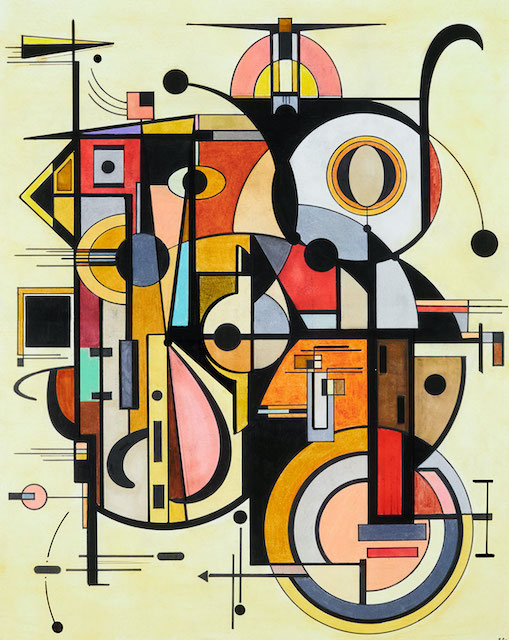
MILES AHEAD, 19x24, $650 print, $2,500 original
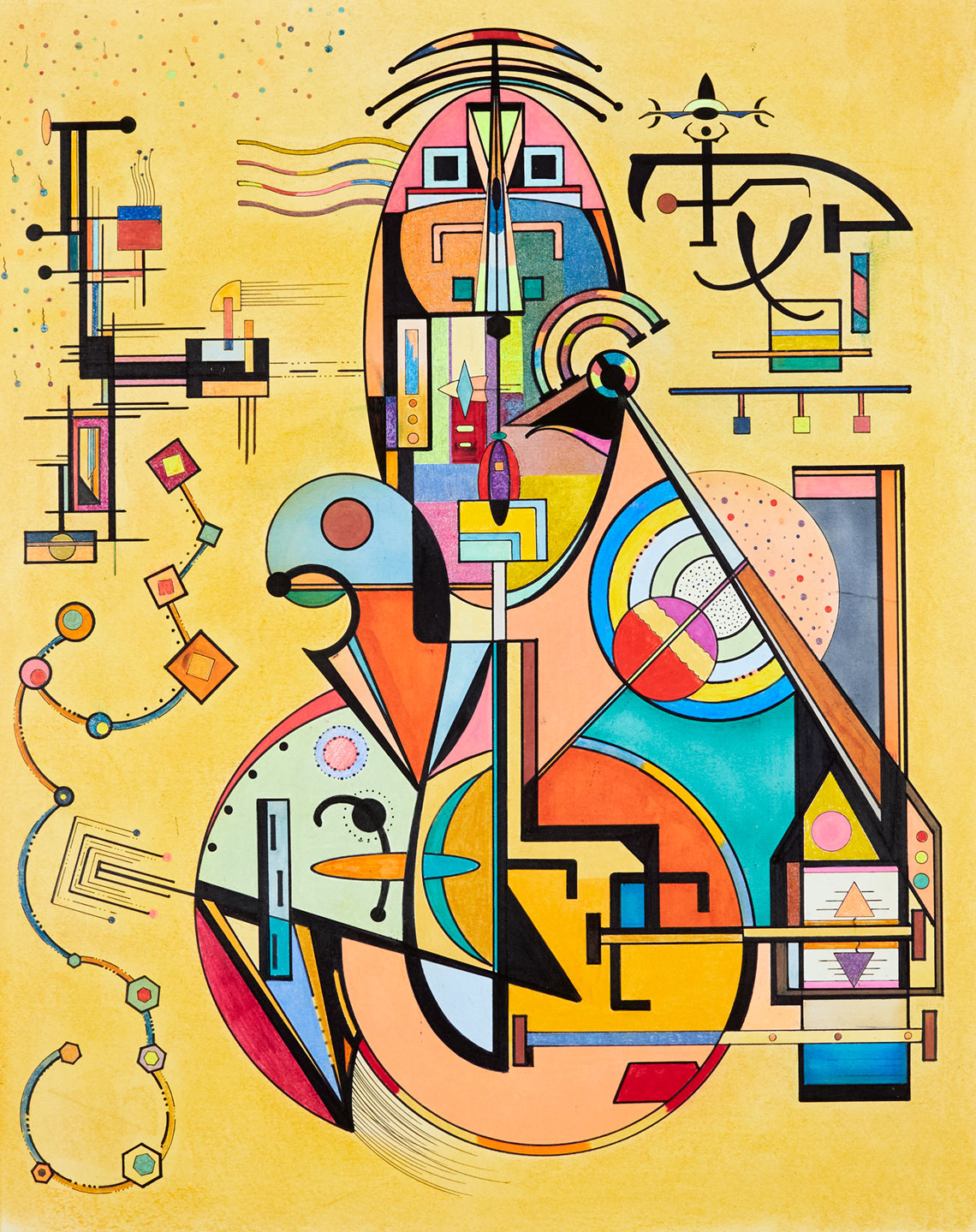
LOOKING CLOSER, 19x24, $650 print, $2,500 original

FACING THE MUSIC, 36x16, $2,400

TRANSPECIFIC SUNSET, 28x22, $2,200

CHORDATA, Sold
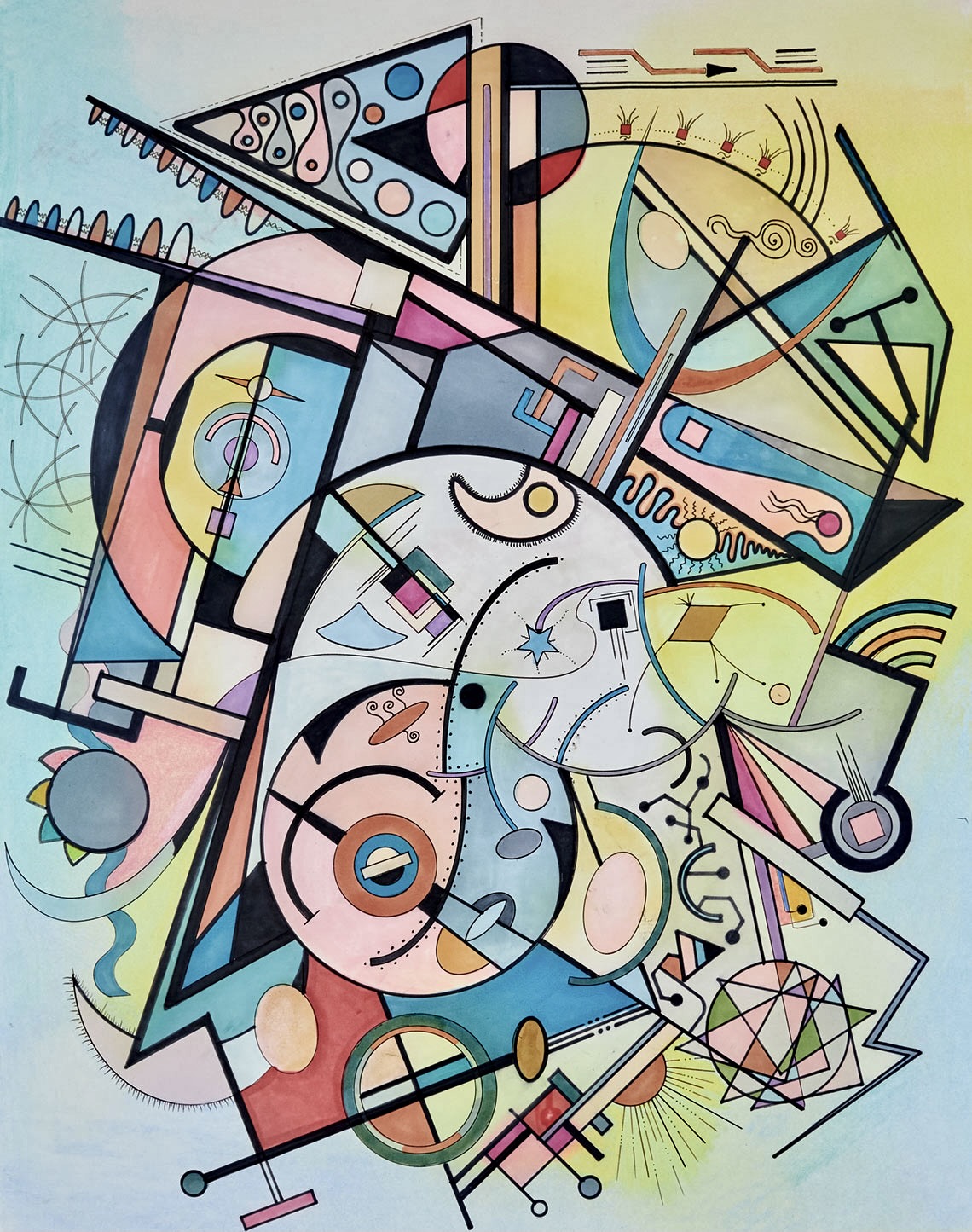
TOPSY TURVY, 19x24, $650 print, $2,500 original
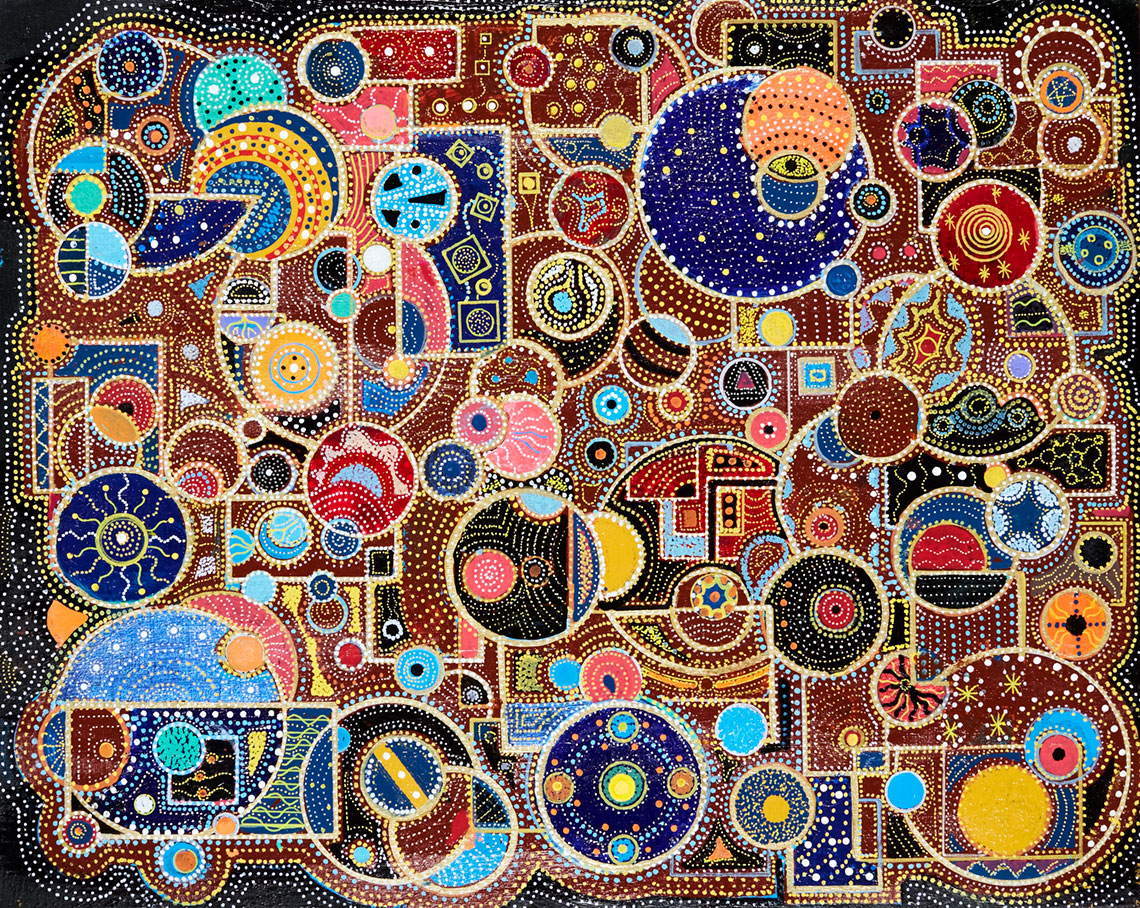
TITIVATION, 20x20, Sold
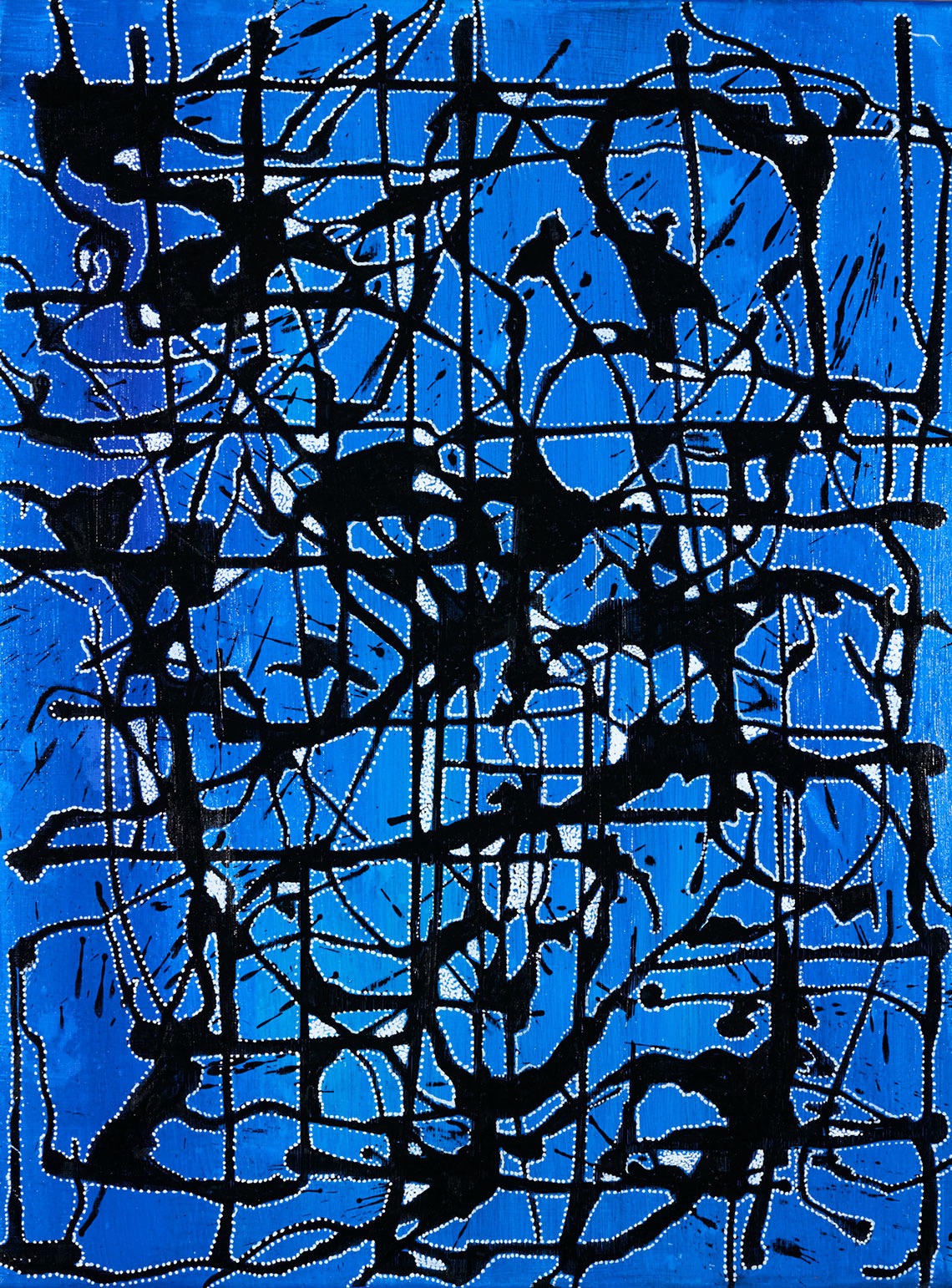
TANGLED UP IN BLUE, 18x26, $950
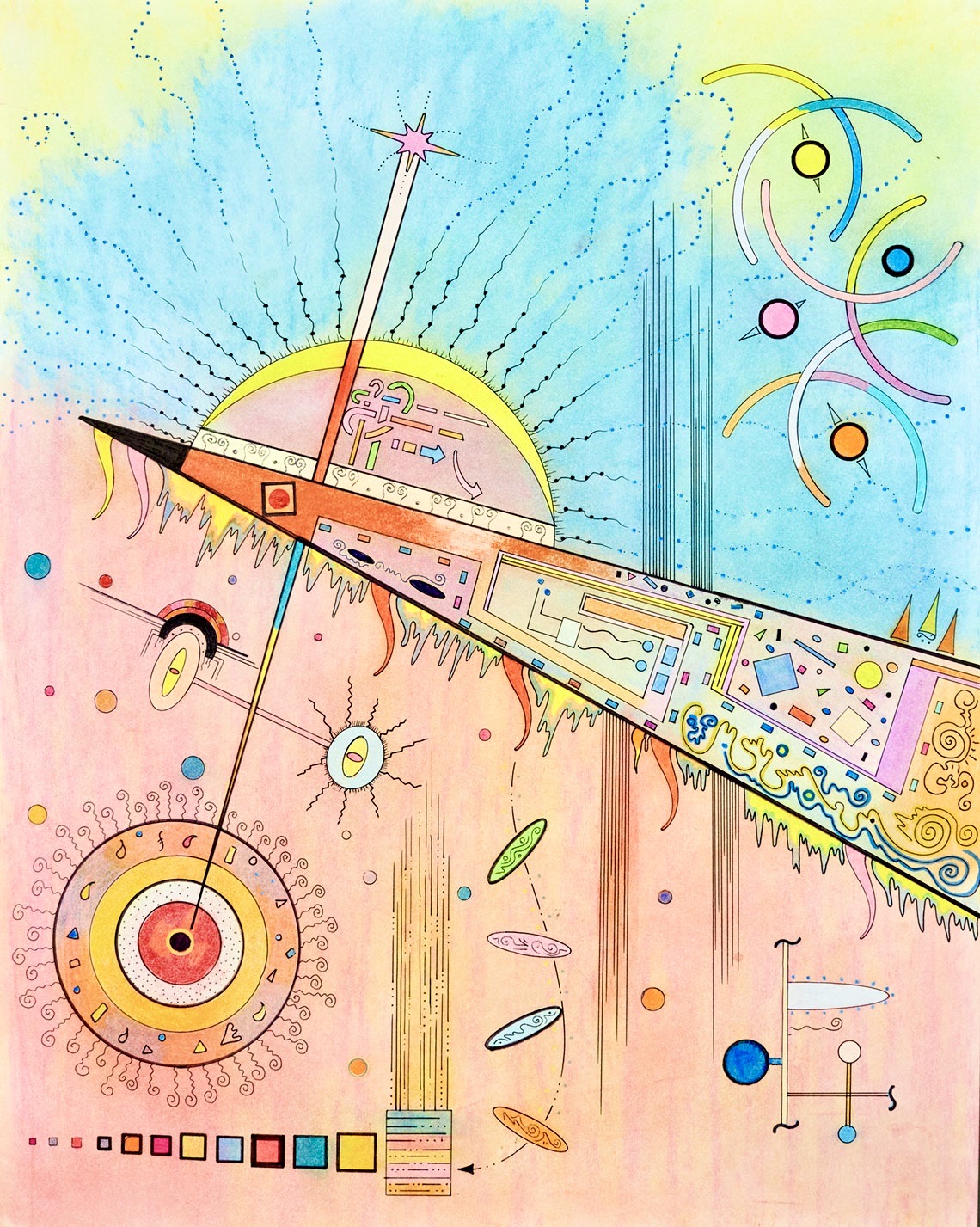
SUN PIERCER, 19x24, $650 print, $2,500 original
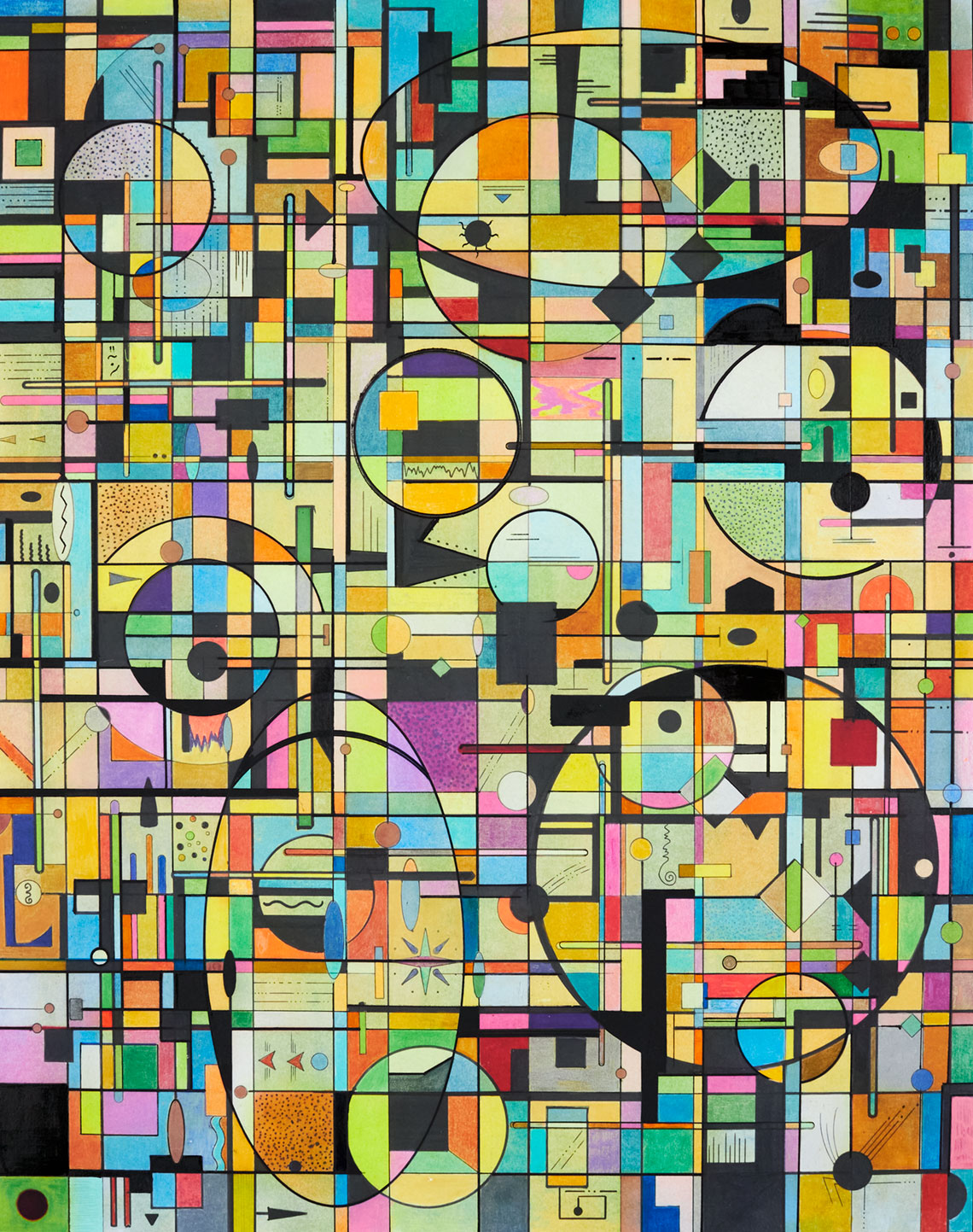
SOBRIETY, 19x24, $650 print, $2,500 original
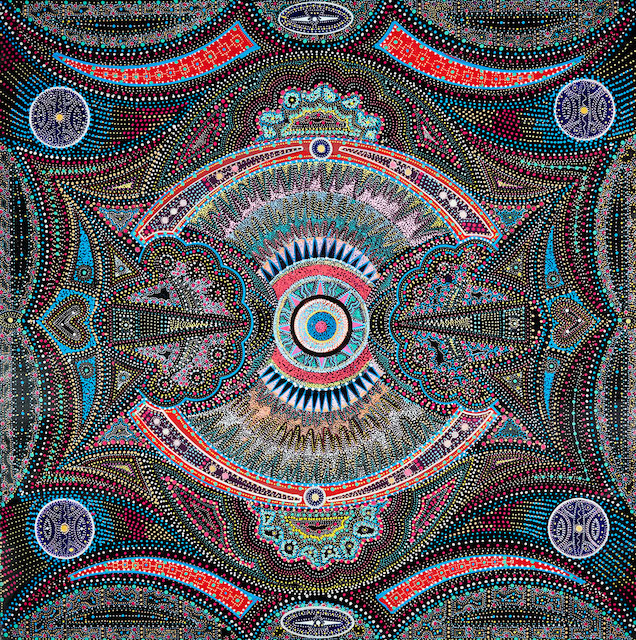
FOCAL POINT, 36x36, $6,500

HIPPOCRENE, 30x24, $2,800
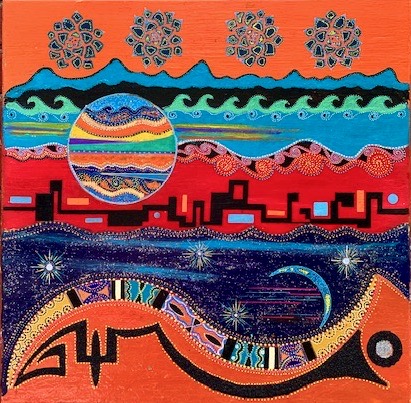
AZTEC COMES TO LIGHT, 23x23, $2,200
AN INTERVIEW WITH SCOTT CRONIN
When did you begin to paint? And why?
Shortly after I turned 50, I decided to explore a creative outlet that was new to me. Visual art seemed like a good choice. Previously, I had the limiting assumption that because I was not good at figurative drawing that I was not an artist. I knew, in my gut, that I had something to say in terms of imagery, but I didn't know what exactly. So, I went to my local art supply store, bought a large sketch pad, some ink pens, pastel pencils and a variety of drafting templates and began creating what turned out to look like art.
What do you like about the process of painting?
I enjoy the feeling of experimentation and the random precision that unfolds. I tend to move quickly and make color and design decisions without much thought. As I create art, I experience a wonderful collaboration between my right brain and left brain that is both instinctive and deliberate. Sometimes it works and sometimes it doesn't. "Mistakes", to me, are a doorway to new directions and outcomes that have very little to do with my initial intent -- even when my intent wasn't obvious at the outset.
What have you learned about yourself via the process of painting?
Among many things, I have learned that I do, in fact, have a talent for combining color, tone and rhythm in a visually compelling way. Music is a near constant when I am at work on a piece. My choice of the music is sometimes consciously done as a way establish the "metronome" for the pace at which I move and the angles, orbitals and shapes that I choose. I have learned that my selective OCD is a gift -- that my need for detail and precision in some areas of my life results in the creation of imagery that is pleasing to other people -- a phenomenon that is very rewarding and delightful to me. I have also learned when and how to "break the mold" whenever I begin to repeat myself. It is at that time that I shift to a different style or approach. Additionally, I have learned how to superimpose an image on a canvas with my mind and brain. This innate skill of mine has become apparent to me, insofar as I have never sketched out an idea or design prior to beginning a new piece. And even if I did, I would likely erase it or ignore it.
What is your experience of the process of painting? What are you feeling and focusing on when you work?
It feels like a private affair, an intimate dinner for two where curiosity, focus, comfort and time are all in the right order. When I am excited or even stuck, I get intrigued by where the slipstream of the muse will take me. Sometimes, I will back myself into a creative cul-de-sac and paint myself into a corner in a way that contradicts the balance and theme present in another part of the canvas, at which point I either attempt to integrate one pattern into another or just hit "delete" and paint over what I have created up to that moment. I have been tempted, with a few of my pieces, to strip away layers to reveal what lies beneath. In some cases, I discover as many as five different abandoned ideas.
What materials do you work with?
Mostly acrylic paint as a base and oil paint pens.
What are some non-artistic influences in your work?
Music. Always music, primarily instrumental pieces. The music is very specific. I have built a playlist geared toward art creation: Philip Glass' compositions have a wonderful effect on the movement of the designs and patterns that emerge. The repetition and tonal qualities of his music are exquisite. Also, certain film scores and ambient music provides a sound canvas that I like to walk on. I am influenced by shapes in just about everything I do -- patterns in the sky, on wood floors, plaster on walls and ceilings. If I can see it, I can detect a design that can be re-worked or re-imagined. Since childhood I have been drawn to the microscopic world. My favorite toy was a very large magnifying glass used in my family's mortuary. My grandfather was a mortician and he used that tool a lot. As I child, I would wander, for hours, gazing at an unknown world that was absolutely enthralling to me.
Are you completely self-taught?
The short answer is "Yes". I have never taken an art class or worked with a teacher in the formal sense, though I have had mentors and muses over the years. Isaac Abrams, an early big brother figure to me, is an extraordinary artist and, to many, the "father of the psychedelic art movement." I have been motivated, supported and prompted by some significant muses in my time as well, though the proverbial "muse" can be quite demanding, so I make a conscious choice to ignore her when the voice gets too commanding.
How are you able to maintain the concentration you need to do such detailed work?
That has rarely been a problem, since I have always had the "on the spectrum" (before the term existed) tendency to get hyper-focused on whatever task I was engaged in, i.e. cleaning the house, cutting the grass, or cooking a meal. My task-focused approach tends toward high efficiency and fast-pace which, at times, can result in accidents, mistakes and occasional injuries. It also results in people getting out of the way and leaving me to do it things in isolation, which I mostly prefer. In that zone of concentration I lose track of time... or time loses track of me. It is a stupendous place to be.
What do you think people respond to in your art?
With a recognition of whimsy, rhythmic awareness and intrigue. Fortunately they, for the most part, recognize a native-like originality. It is extremely gratifying when people have a somewhat giddy reaction to my work. It is that reaction that motivates me to see what a broader audience will think, feel and react to. I am frequently asked "are you high when you paint?" The answer is "No" -- but I am definitely influenced by the experiences I have had of the "altered state".
How has your work changed over time?
On a core level I don't know if it has. Although I have ventured into a few different styles, the way I approach a blank canvas or paper has a familiar look to me. Whether it is pointillism, geometric, native-primitive or graphic design that harks from another era of jazz album covers, much of the finished product is a "deliberate accident."
What inspires you to create your art?
Curiosity, boredom, a want for a place to focus on that I enjoy, a desire to have alone time and an excitement that is singular in its charge, like going to visit an old friend that never disappoints.
Who are your influences?
I didn't have any when I began, but soon discovered (and was told that) I certainly must be into Kandinsky and Klee and the Bauhaus crowd. When I went to an exhibition of Kandinsky, I felt like I was in the company of a presence where mutual understanding of a very specific language was lucid and fluid.
How do you know when it's complete? Is it ever really complete?
I have gotten better over the years at making this determination, though I still have the habit of filling up more space than serves the overall impact of the image. Leaving empty space as is, is sometimes determined as an after-thought and I will return to a canvas and re-create it by painting empty space back into it. I still find myself looking at a "finished" painting and, in some cases, returning to it to add, subtract or augment color or design to bring it into its fresh and present state.
How can I buy one of your pieces?
1. Drop me an email (scottcronin85@gmail.com) and let me know which of the above pieces you want to buy.
2. Most of the pieces I post on Facebook are also for sale. You can always message me or email me.
3. I sell giclees (prints) of my work, as well as the originals.
NOTE: I am the process of putting the finishing touches on my website. If you would like me to send you the link when it's ready, let me know.
Post a comment
Thanks for signing in, . Now you can comment. (sign out)
(If you haven't left a comment here before, you may need to be approved by the site owner before your comment will appear. Until then, it won't appear on the entry. Thanks for waiting.)

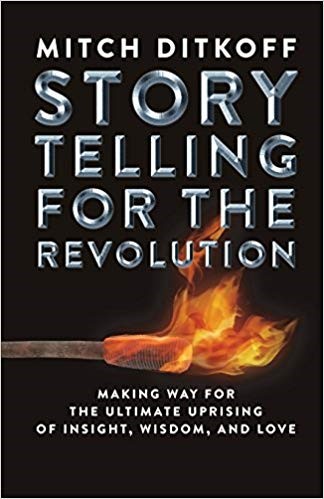





 If you like this blog, you might also like Mitch's other two blogs:
If you like this blog, you might also like Mitch's other two blogs: 